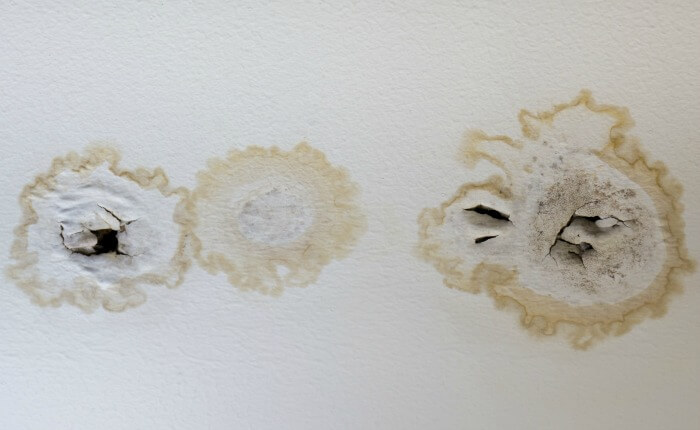Water Damage Restoration
Water leaks, flooding, and burst pipes can turn into a homeowner’s worst nightmare, causing costly damage in a matter of minutes. Whether from a sudden plumbing failure or a major storm, water intrusion threatens your home’s structure, air quality, and overall safety. Quick action is critical to minimize the impact and prevent secondary issues like mold growth and structural weakening.
Whether you’re dealing with minor leaks, standing water, or widespread flood damage, this guide will walk you through the essential steps of water damage restoration. From understanding the types of water damage and the restoration process to exploring costs, preventive measures, and finding the right professionals, this resource will help you navigate the recovery process with confidence.
Water damage can often lead to additional home hazards, including mold growth, fire risks from electrical exposure, and contamination from sewage backups. If your property has suffered from mold infestations, fire damage, or sewage-related flooding, it’s important to take the proper steps for cleanup and restoration. Learn more about mold remediation, fire damage restoration, and sewage cleanup in our dedicated guides, where you’ll find in-depth information on prevention, costs, and hiring the right professionals.
What Is Water Damage Restoration?
Water damage restoration refers to the comprehensive process of cleaning, drying, repairing, and restoring properties affected by water intrusion. This process aims to return the property to its pre-damage condition, ensuring safety and structural integrity. Common sources of water damage include burst pipes, appliance malfunctions, roof leaks, and natural disasters like floods.
Types of Water Damage
There are three main types of water damage:
- Category 1 is caused by clean water.
- Category 2 is caused by gray water.
- Category 3 is caused by black water.
Category 1
This occurs when clean water shows up where it doesn’t belong. Clean water is water that hasn’t come into contact with any biohazardous materials or chemicals — for instance, what comes out of your kitchen sink tap is clean water.
A good example of this sort of water damage is clean water that comes from a broken pipe in your home, such as underneath your kitchen sink. It might also come in the form of a slow leak. This water is clean enough to drink but of course, can still wreak all sorts of havoc. However, this is the easiest water damage to clean, especially if it is caught quickly.
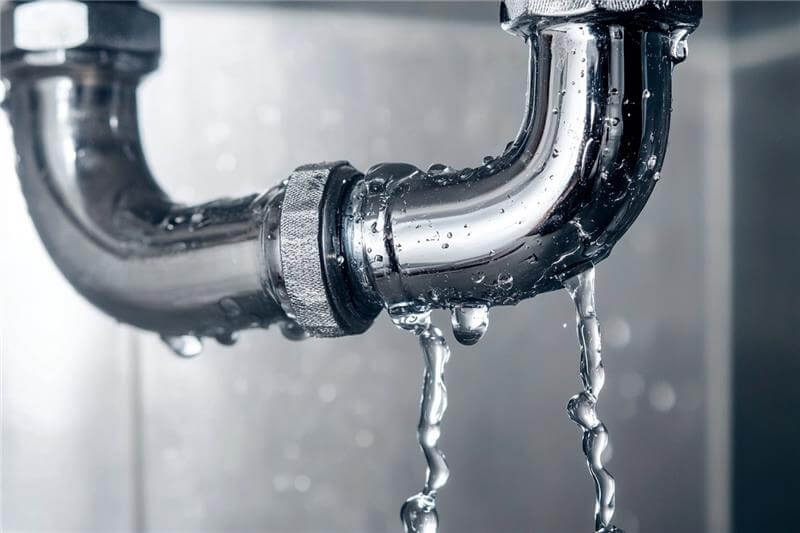
Category 2
Gray water is water that has been used in an appliance and then is meant to be recycled or ejected out of the home through a series of pipes. For example, the water that goes into your washing machine is clean water; the water that comes out of your washing machine is filled with detergents and the dirt and grime from clothing, so that’s considered gray water.
Gray water not only brings the problems associated with any sort of clean water leak, but also brings the extensive cleanup that’s required when you have detergents, food particles, dirt, grime, and similar contaminants in the water.
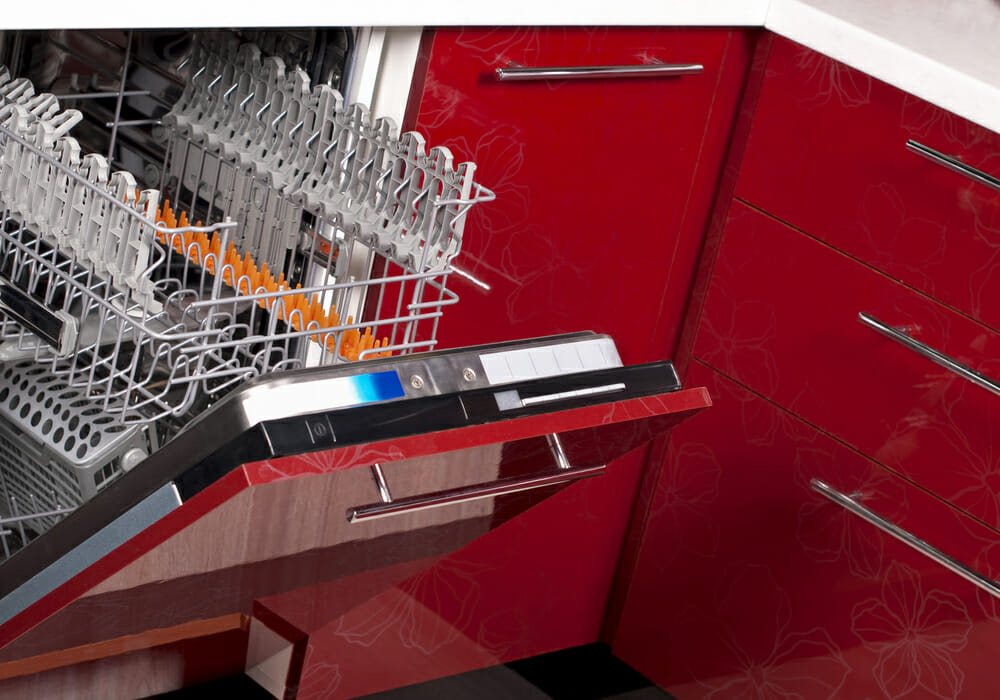
Category 3
This is the most serious category of water damage. Black water includes significant pathogens that come from sewage or intruding floodwaters. This sort of water damage is very high-risk to not only your home but your health as well.
This is especially problematic because the cleaning of black water is so difficult. Anything that the black water touches is considered contaminated and must be replaced. That means replacing drywall, flooring, carpet, furniture, and even clothing if it happened to come into contact with black water.
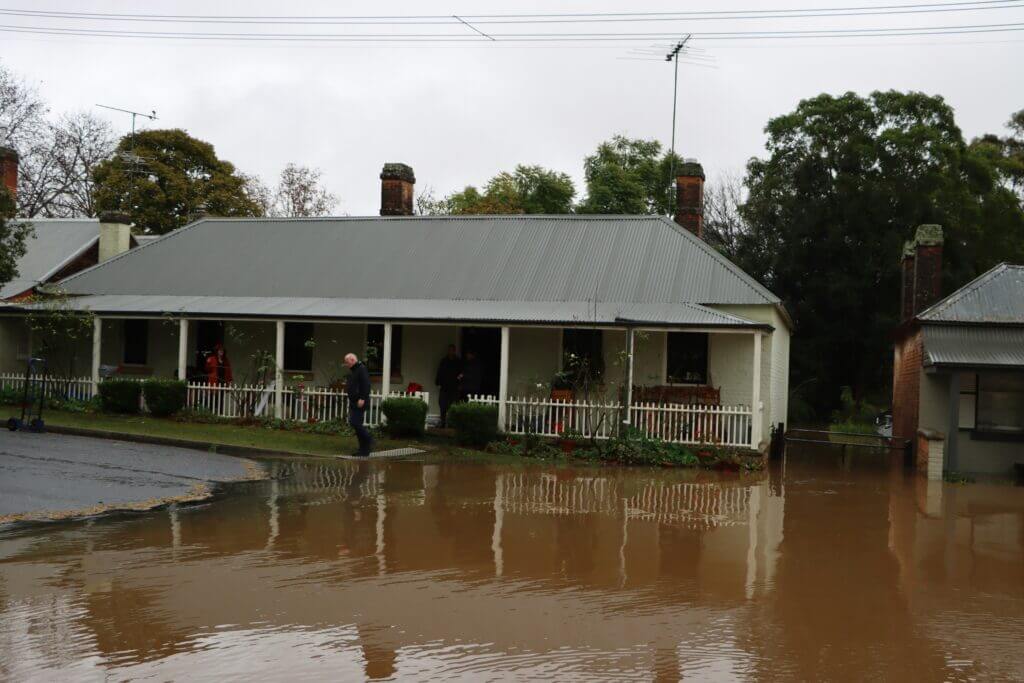
Frequently Asked Questions
Steps in the Water Damage Restoration Process
There is a method to cleaning up water damage, and it begins with first stopping the water. If it’s a burst pipe, turn off the water at the main. If it’s floodwaters, you must wait until they recede before you can begin work to clean up the problem. Here’s how it goes when the water has stopped and it’s time to call in the professionals.
1. Assessment and Inspection
When you contact a company to handle the water damage, they will have plenty of questions. You’ll describe the problem and how it happened, then schedule an appointment with the team. They will get to you as quickly as they can, as they know time is of the essence.
The company will conduct a detailed assessment of the damage, checking not only the area where the problem is most obvious but also other parts of the home to make sure there’s no damage elsewhere. (Remember, water can easily flow into or across the floorboards, sink into the space underneath baseboards, and otherwise show up far away from the original source.)
After that assessment, the company will give you a quote and explain what they must do to remediate the water damage and restore your home.
2. Water Extraction and Drying
The company will begin by making sure the water is out of the home. While you likely did some serious cleanup on your own, they will make sure that the water that soaked into carpets and floorboards is gone. To do that, they use large pumps, vacuums, and fans. You might be amazed at the amount of water they can extract from the surfaces of your home that you could have sworn were already dry!
They will then use powerful fans to dry the area further, helping ensure that there is no dampness remaining. This can take several days to do.
3. Cleaning and Sanitizing
Then it’s time to clean everything that the water touched. How this is handled depends on the category of the damage. A major flooding issue with clean water is going to be much easier to handle than a smaller issue with black water.
This might mean that the company will wash and clean the upholstery of any furniture that came into contact with the water, wash and dry clothing, carefully clean electronic devices, and the like — or dispose of those things that simply cannot overcome the contamination of gray or black water. The company will discuss with you what has to go and what might be salvaged.
The company will also use antibacterial and antimicrobial solutions to sanitize everything in the damaged area. This will help ensure that mold doesn’t begin to grow and that nasty odors are stopped in their tracks.
4. Dehumidifying and Monitoring
Even though as much water has been removed as possible, there might still be some moisture lingering. That’s why the company will bring in dehumidifiers, large fans, and air scrubbers and filters. These might run for several weeks to ensure that your home truly has escaped the worst consequences of the water damage.
The company will likely recommend a monitoring system that prevents problems from happening again. This might mean water sensors near appliances and pipes that could leak.
5. Repair and Restoration
The damage that has been done to your home might require the work of a contractor to fix it. A water remediation company can handle pulling out the drywall, carpet, and other elements that have been contaminated. They can make sure that the moisture is completely gone.
But at that point, it becomes the job of a contractor to handle restoring your home. As the water remediation company is doing their work, it’s a good idea to be getting quotes from contractors on the next steps.
Frequently Asked Questions
Topics to Explore
How Much Does Water Damage Restoration Cost?
Water damage restoration costs range from $400 or so for a small problem to $13,000 or more for a serious issue. On average, homeowners can expect to pay $3,300 to fix water damage in their home.
What determines where your costs will fall? A great deal of what depends upon the category of damage.
- Category 1: This is clean water damage and often runs $3 to $4 per square foot to clean up. Even an extensive amount of damage from clean water might be cheaper to fix than a much smaller area that has been contaminated by black water.
- Category 2: Gray water damage can cost between $4 and $7 per square foot to clean and dry. This cost is higher due to the need to clean contaminants out of your home, including flooring, furniture, clothing, etc.
- Category 3: Black water damage restoration is tricky. The average cost runs between $7 and $7.50 per square foot, but that doesn’t take into account the cost of replacing things that must be thrown out. Therefore, it’s impossible to truly estimate just how much black water damage will cost.
There are other prices to consider as well, such as:
- Drying carpet can cost between $1 and $11 per square foot. If you need to replace the carpet completely, expect anywhere from $200 to $2,000 per room, depending upon the carpet you choose.
- Drywall repair or replacement can run between $1 and $3 per square foot. That doesn’t include the costs to repaint the room.
- Leaks from above can damage ceilings. The average cost for ceiling repair is between $350 and $1,250.
- Speaking of ceilings, sometimes water damage can come from a roof leak. That means part of your room must be repaired or perhaps even replaced. Having your roof repaired can run between $500 and $1,800.
- Replacement of hardwood flooring costs between $10 and $15 per square foot. Most find their average cost runs $200 to $550 per room.
- Replacing furniture, clothing, and other items that have been contaminated by black water is almost impossible to estimate, as every home is so different and every flood incident can vary.
Factors Affecting Water Damage Restoration Cost
Numerous factors affect the cost of your water damage restoration. Of course, it begins with the severity and the category of water damage. Obviously, recovery from floodwaters that inundated your entire home will cost much more than clean water damage from a leaky pipe. But there are other factors to consider as well.
- The Extent of the Work: Water damage restoration for the laundry room can cost much less than the repair of a whole floor of the home. Some companies charge a flat rate. Others will charge an hourly rate, which varies from $70 to $200 per hour.
- Necessary Drying and Dehumidifying: Drying your home will likely tap into your own electric supply, and those big fans will quickly drive up your monthly bill. There is likely also a charge for the use of the fans and dehumidifiers, which is often charged by the day.
- Geographical Location: Where you live helps determine the labor costs in your local area, as well as how many water damage companies are competing for your business. As you might imagine, costs for water damage restoration in Palm Beach, Florida might be lower due to the many companies on hand in the event of a hurricane. But it’s safe to say that a smaller town like Bowling Green, Kentucky won’t have nearly as many water damage experts on tap.
- Emergency Calls: An emergency call to the water damage restoration company comes with the benefit of getting someone out there quickly to handle the situation before it gets worse. On the other hand, expect a surcharge and higher rates when you have to call for emergency help.
- Location of the Damage in your Home: In addition to the geographical location, where the damage is in your home matters to your bottom line. An area that is easy to access and clean will cost much less than an area that it tougher, such as a crawl space.
- Costs of Leaving the Home: In some cases, water damage can be so severe that you must leave your home while repairs are in progress. This is especially true if your home has been flooded with black water. These costs can include food, hotel and lodging, and new clothing and personal items, if necessary.
In some cases, damage restoration costs — including the costs of living outside of your home for a while — might be covered by your homeowner’s insurance. Before you pay anything out of pocket, contact your insurance agent to determine what is covered and what is not.
Topics to Explore
Choosing the Right Water Damage Restoration Service
Selecting the right restoration service is essential for minimizing damage and ensuring a smooth recovery. Here are key factors to consider:
- Certification and Experience: Choose a company certified by organizations like IICRC or RIA, ensuring they follow industry standards. Experience matters—look for providers with a strong track record.
- 24/7 Emergency Response: Water damage requires immediate action to prevent mold growth and structural issues. A reliable company should offer round-the-clock service and fast response times.
- Comprehensive Services: Opt for a company that handles everything from water extraction and drying to mold prevention and structural repairs. Full-service providers streamline the process and reduce stress.
- Advanced Equipment: Look for companies using industrial-grade dehumidifiers, moisture detectors, and air scrubbers to ensure complete water removal and prevent future damage.
- Reputation and Insurance Support: Check customer reviews, BBB ratings, and testimonials to assess reliability. A reputable company should also assist with insurance claims, making the process easier for homeowners.
Frequently Asked Questions
Topics to Explore
What to Do After Water Damage Restoration
Once your home has undergone water damage restoration, taking proactive steps can help ensure long-term protection and prevent future issues.
- Inspect the Work: Walk through the restored areas and check for lingering moisture, structural issues, or damage that might need additional attention.
- Review Warranties & Insurance Coverage: Understand any warranties provided by the restoration company and check your homeowner’s insurance policy for future coverage.
- Schedule Routine Maintenance: Regularly inspect areas prone to leaks, such as plumbing, roofing, and basement drainage, to catch potential issues early.
- Invest in Preventative Measures: Consider installing water sensors, sump pumps, or improved drainage to reduce the risk of future water damage.
- Stay in Touch with Professionals: Keep the contact information of the restoration company in case of any follow-up concerns or emergencies.

Frequently Asked Questions
Topics to Explore
Preventing Water Damage: Tips for Protection and Preparedness
Water damage can be costly and disruptive, but taking proactive steps can help prevent it before it happens. Regular home maintenance, preparedness for extreme weather, and swift action when issues arise can significantly reduce the risk of costly repairs. Here’s how to protect your home:
Regular Maintenance to Prevent Water Damage
- Inspect and Maintain Your Roof: Check for missing or damaged shingles and clear debris from gutters and downspouts to prevent water from pooling and leaking into your home.
- Keep Gutters and Downspouts Clean: Clogged gutters can cause water to overflow and seep into your foundation. Clean them at least twice a year and ensure downspouts direct water at least six feet away from your home.
- Check and Seal Windows and Doors: Ensure that seals and caulking around windows and doors are intact to prevent leaks.
- Inspect and Maintain Plumbing: Regularly check pipes for leaks or corrosion, and insulate exposed pipes in winter to prevent freezing and bursting.
- Monitor Your Water Bill: A sudden increase in your water bill can indicate a hidden leak that needs attention.
Preparing for Potential Water Damage Risks
- Install a Sump Pump with a Battery Backup: A sump pump helps keep basements dry by redirecting excess water away from your home. A backup battery ensures it works even during power outages.
- Use Water Leak Detectors: Smart leak detectors can alert you to moisture buildup before it becomes a major issue, especially in high-risk areas like basements, kitchens, and bathrooms.
- Grade Landscaping Away from the House: Ensure the ground around your home slopes away from the foundation to prevent water from pooling.
- Know Where Your Water Shutoff Valve Is: In case of a burst pipe, shutting off the main water supply quickly can minimize damage.
Mitigating Water Damage When It Happens
- Act Quickly: If you experience water intrusion, begin drying out the area immediately with fans and dehumidifiers to prevent mold growth.
- Remove Valuables from Flood-Prone Areas: Store important documents and valuables in waterproof containers or move them to higher levels in your home.
- Have a Professional Inspection After a Storm or Leak: If you suspect water damage, hiring a professional can help assess hidden moisture issues before they lead to bigger problems.
Taking these precautions can significantly reduce the risk of water damage and protect your home from costly repairs. If water damage does occur, acting swiftly and hiring a qualified restoration service can make all the difference in minimizing long-term damage.
Ready to get your project started?
Let us find the best restoration pros in your area, then easily request quotes, book a contractor, and get the job done. It's that easy.
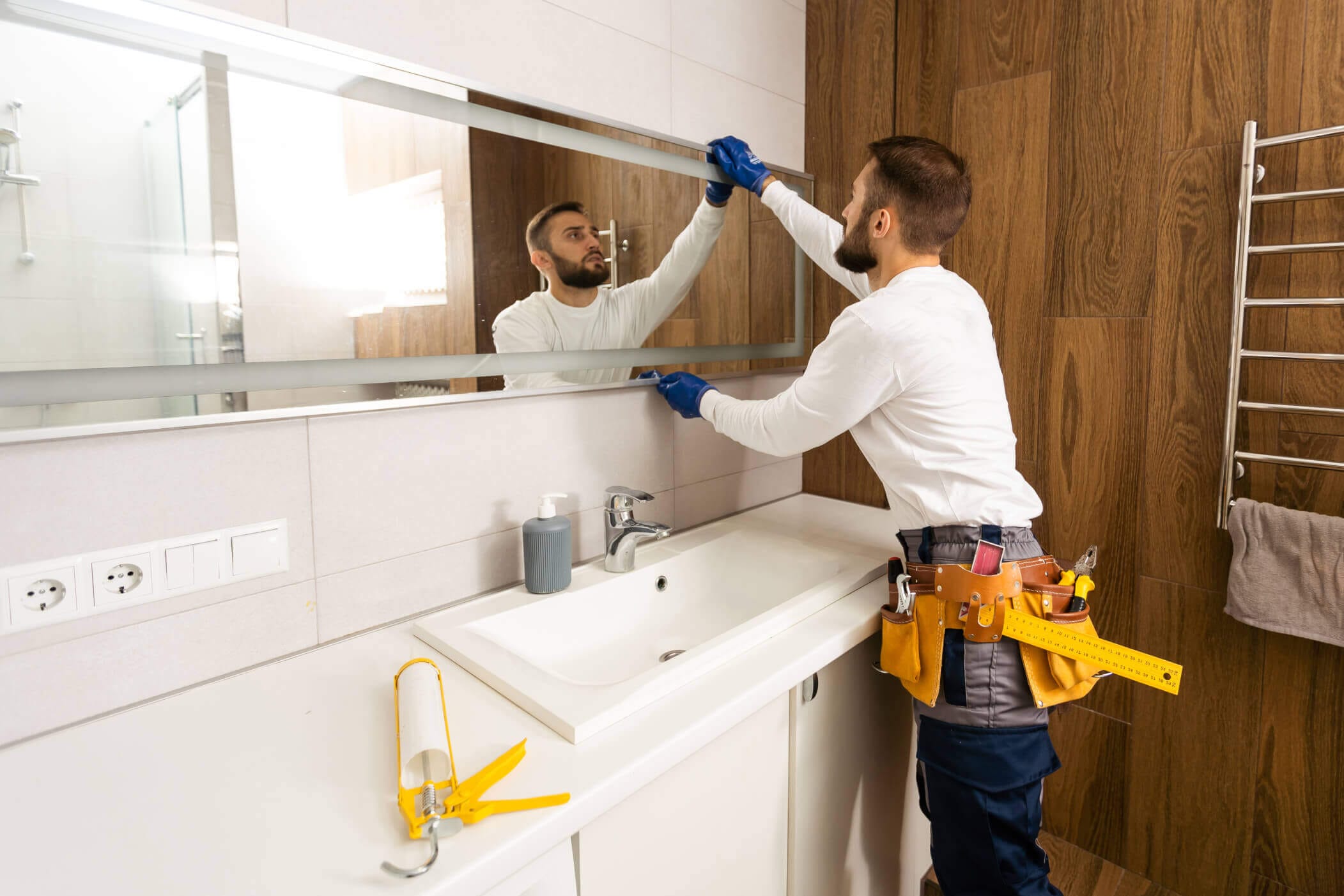
Real Stories, Real Success
See how our solutions empower homeowner projects and experiences.
